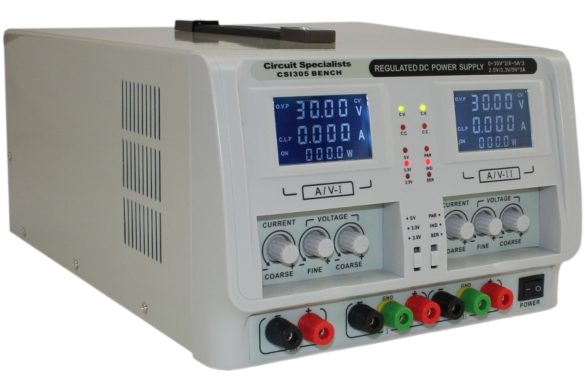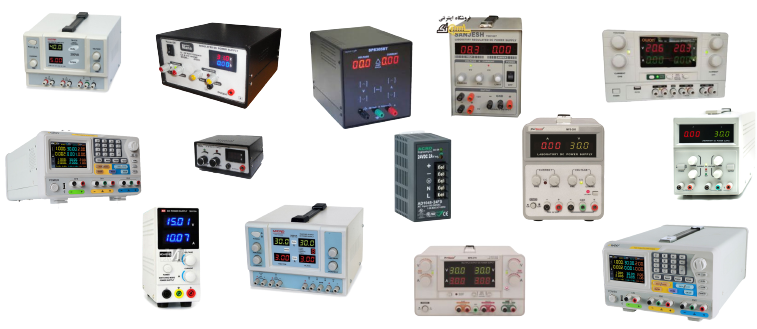Types of industrial power supply
Power Supplies are one of the most important parts of every server and system, without them, many parts that require a certain electrical load or voltage will no longer work. Many manufacturers and brands design and produce different types of power sources.
Table of Contents:
- What is the power supply?
- What is the function of the power supply?
- Power supply applications
- What are the types of power supply?
- Different brands of power supplies and their differences
What is the power supply?
Power supply is an electrical device whose task is to provide the electrical power required for the electrical consumer or electrical load. It should be noted that the power supply is not always a separate device. Rather, it may be part of another device.
All electronic devices that we know; Or we deal with them on a daily basis, they use a type of power source. Computer, TV, laptop, etc. are all devices that we deal with constantly and they use some kind of power source inside. The reason for using a power supply for each device can be said in simple words, it is to provide the right voltage and the right current for the same device.
Different terms are used for power supply in the market. Some people call it “power” and others refer to the source as “converter”. On the packaging of the power supply of different brands, words such as “Power Supply”, “Power Converter”, “Power Pack” or PS can be seen. But the most common term is “PSU”, which is used to name the power supply in personal computers and is also used in servers.
What is the main function?
The task of the power source is to take electrical energy from an energy source (mechanical, electrical, chemical, solar, etc.) and convert it into voltage, current and frequency suitable for feeding the load (the device in question). A regulated power supply can keep its output voltage or current almost constant up to a certain level. This prevents damage to the device.
The main features:
- The type and range of current and voltage it supplies to the load is different.
- The stability of output voltage or current is different for different electrical loads.
- The amount of time it can provide energy without refueling or charging power sources are used in energy storage devices such as batteries and fuel cells, electrical energy transmission systems, electromechanical systems such as generators, and solar energy storage and transmission.
- The power supply can provide the electrical energy of the system as a device and part connected to an electrical system and as a separate and independent system.
Main use of power sources:
As mentioned, the task of power sources is to provide electrical energy for consumers. The power source receives electrical energy from energy generators (which can be motors, capacitors, solar panels, etc.)
The main task of the power supply is to convert the electric current into the appropriate current voltage and frequency of the desired electric consumer. Hence, power supplies are sometimes known as an electrical energy converter. The use of power supply can be found in electrical and electronic engineering, laboratory works and almost all devices and works that have electrical devices.
Engineers can feed electrical and electronic circuits with its help. Power supplies are also used in laboratory and repair environments. For example, a mobile phone repairman has to constantly use power sources to test and turn on the circuits of his mobile phone.
Power supply applications include:
- Power sources are used in old computers and laptops, which type is switch mode.
- It is the main part of all electrical appliances. All electrical appliances and devices consist of a power supply with the required voltage.
- Another application of the power source is in arc welding, which can be very effective. It should be noted that the electric energy used for melting metals and joining in arc welding is provided by the power source.
- The power source is used in the avionics system of all aircraft models, including commercial and military.
- The power source is used in industrial automation, transportation industry, setting up production lines, motors, cameras, pumps, etc.
Types of power supply:
Power sources are classified according to different characteristics. A common classification of power supplies is in terms of their electrical signal generation. which have divided the power supplies into two categories, AC power supplies and DC power supplies.
DC power supply:
The DC power source converts the alternating voltage of the city or any voltage generator, including solar cells or electric circuits and turbines, etc. into a DC signal, and its output is direct voltage. This power source is one of the most widely used power sources in the world, which can be found in most household and office appliances.
DC power sources are divided into two categories, which are:
1. Linear:
This type of power supplier is named because it does not switch. Of course, non-linear circuit elements such as transistors and diodes are used in this type of structure. The basis of the operation of the linear power supply is that after reducing the amplitude of the input alternating voltage (AC) by a step-down transformer, it rectifies it with the help of a diode bridge (DC) Half-wave rectification is rarely used) and after the distortion target (or Ripple) with the help of a simple capacitor filter, the output is transferred to the load.
Of course, before that, linear voltage regulators are usually used to stabilize the output as best as possible. This type of power supply has inherent limitations that make it impossible to use them to provide high currents. But it is still used for noise-sensitive applications.
2. Switching:
This type uses a switch as a controller to convert electrical power to another voltage level with higher efficiency. The basis of the operation of this type of power supply is the disconnection and connection of transistors. In fact, high frequency transistors make the output of the source (in the form of frequency) by continuously switching off and on (switching between off and on mode). This is the reason why this type of power supply is named switching. Computer power can be considered as an example of a switching power supply.
AC power supply:
In general, the AC supply takes the voltage from a power source (city power source) and reduces it to the desired voltage. Of course, some filtering may also be done in these conditions.
Uninterruptible Power Supply (UPS):
Fluctuations and power outages may cause irreparable damage to many electronic devices and devices. Therefore, in essential appliances, a power supplier is needed that can continue its task in the event of a city power outage or a disruption in the power input source. An uninterruptible supply is used to protect hardware and equipment such as computer systems, servers, telecommunications equipment, or other sensitive electrical equipment.
Different brands of PowerSupply:
Today, various brands have designed and produced different power supplies with special features. Among these brands are Cooler Master, Enermax, EVGA, Deep Cool, FSP, Corsair, Raidmax, He mentioned BitFenix, Gigabyte.
Now you may be wondering what is the difference between the power sources of each of these brands. In answer to this question, I must say that there are different features that we should pay attention to when buying a power supply. Among these features, the following can be mentioned:
Efficiency:
The efficiency or output performance in relation to the power consumption or output power of the power sources follows a set of protocols and standards. One of these protocols is known as (80 Plus) and its rating is determined based on the ratio of input current to output energy. The first is the 80 Plus Standard, and manufacturing based on that means that the output of this PowerSupply is at least 80% of the input current.
Eta is the efficiency symbol in electronic circuits. The input power divided by the power consumed by the power supply is mostly numerically calculated as a percentage. The output power of a source is classified based on different criteria. For example, this power is done in numbers of 10, 20, 50 and 100 percent. Different brands sometimes use 100% efficiency for advertising to show the ability of their product. which is often unrealistic.
Cabling:
Power sources of different brands have 3 statuses in the field of cabling. that includes:
- Power supplies with cables and non-modular (all cables are connected to the power supply)
- Power supplies with semi-modular cabling (some essential cables are permanently installed in the power supply and others are optionally installed)
- Power sources with completely modular cabling (all the output cables of this model are completely modular and the user only connects the cables they need to the source.)
Protection standards:
Quality and reliable power sources must have some protection circuits and standards. These standards are sometimes known as OVP, OPPP, UVP, OCP, SCP, OL, OTP, etc. And the presence of at least 5 of these standards is required for the quality and safety of its parts. You may also know these standards as Security Protection. Of course, each of them has specific duties.
Proper ventilation:
All power sources include a main cooling system and a number of heat sinks. According to the current received from the power source and its quality, the installed fans and heat sinks are also different. You should pay special attention to this factor when buying a power supply.
Conclusion:
During this article, we got acquainted with the types of power supplies and their functions and applications. If you intend to buy a power supply, the most important thing you should pay attention to when buying a power supply.
Choosing the purpose of using the power source and the desired features. Sometimes the purchased power is good and from reliable brands, but it is used in wrong fields. In terms of application, power sources are classified into 3 categories, they are:
- Desktop and home power supplies
- Overclocking, server and workstation power supplies
- Industrial power
For each use, a suitable power supply must be used to ensure the health of your equipment and the device itself for a long time. Our consultants are ready to serve you dear ones in order to buy and receive advice in choosing. For more information contact us through WhatsApp.




